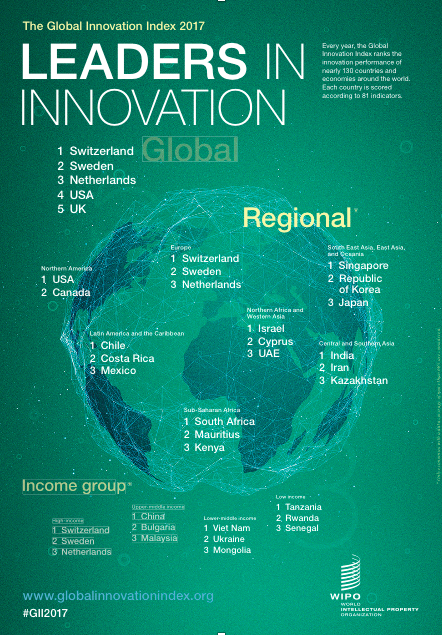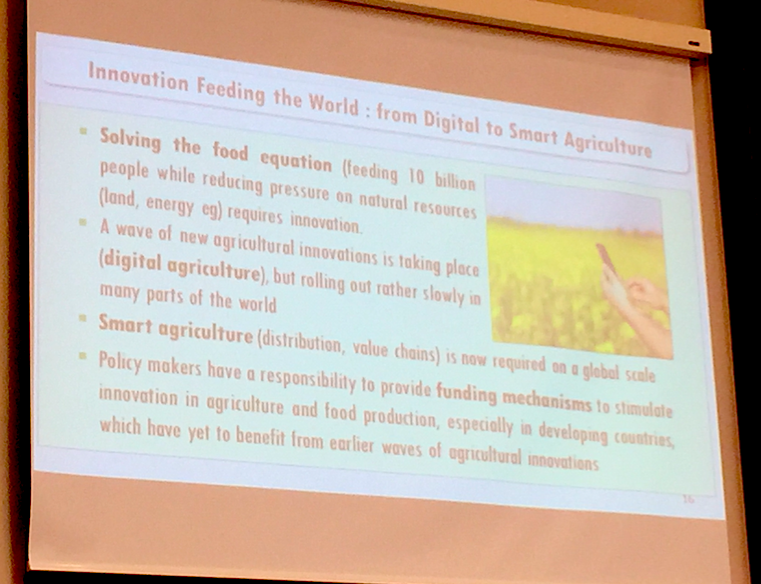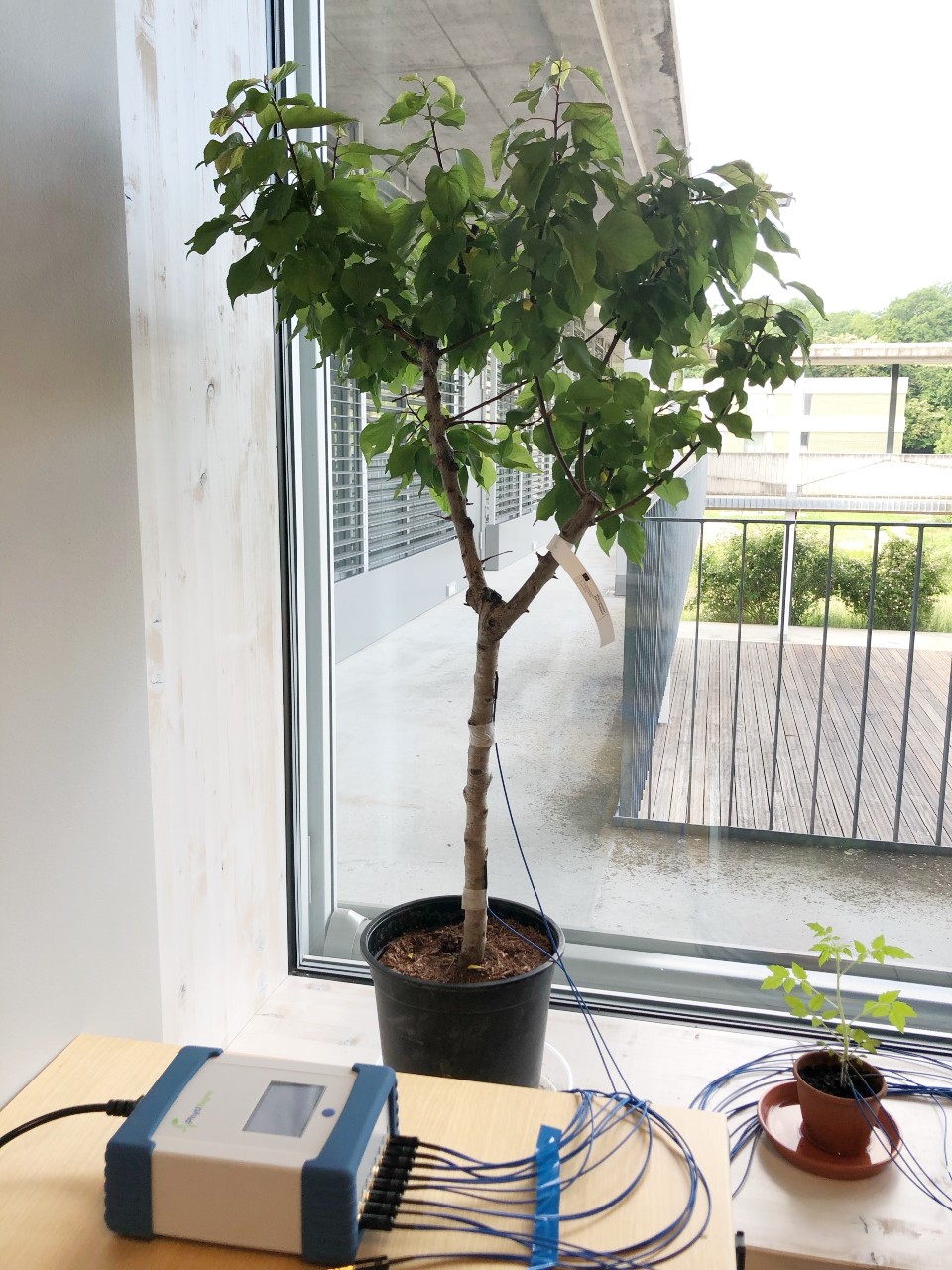
On June 15, WIPO, the World Intellectual Property Organization, hosted the launch of the Global Innovation Index (GII) 2017 during which insights were presented to the public and permanent missions of the UN, here in Geneva Switzerland. The GII is a valuable benchmarking tool through which policy makers, business leaders and the public can evaluate progress in economic growth and development. The theme of this year’s index, Innovation Feeding the World, encompasses Vivent’s vision for Phytl Signs of extending plant science by exploring electrophysiology and how it may lead to breakthroughs in plant production and quality.
Once again Switzerland lead rankings as the most innovative country and congratulations are also due to India as an emerging innovation center in Asia and to countries like Vietnam and the United Arab Emirates who made significant improvements in their rankings.
Substantial research was carried out this year to gain insights into innovation in the agriculture and food systems. Achieving food security for everyone is one of the UN’s Millennium and Sustainable Development Goals and innovation is key to driving productivity growth in the food sector to meet the increased global demand, competition for limited natural resources, like land and water, and to adapt to continually changing climates.
Bruno Lanvin of INSEAD reported that the emergence of “digital agriculture” including the use of drones, satellite based sensors and field robotics is underway worldwide but there is an urgent need for “smart agriculture” to optimize the supply and distribution chains in the food sector and to address the needs of the world’s poorest people.
 Challenges facing the food system today include long innovation cycles, the need for substantial capital, stagnating farm incomes, lagging agriculture productivity growth in developing countries and reductions in public R&D spending, however here are Phytl Signs we remain very optimistic that worldwide food security can be achieved.
Challenges facing the food system today include long innovation cycles, the need for substantial capital, stagnating farm incomes, lagging agriculture productivity growth in developing countries and reductions in public R&D spending, however here are Phytl Signs we remain very optimistic that worldwide food security can be achieved.
Historically agricultural innovation has been amazingly successful. Considering recent innovations only, we saw huge increases in productivity as the moldboard plow and cotton gin were adopted in the 1700s, refrigeration and pasteurization were adopted in the 1800s and Mendel’s plant breeding and the combine harvester were adopted in the early 1900s. Norman Borlaug’s high yield crops formed the basis of the “Green Revolution” in the 1950s which saved millions of people from hunger.
The pace of agricultural innovation is increasing with the convergence of knowledge from plant sciences, agronomy, digitization and robotics. The design of the Phytl Signs plant monitor is an example in which state of the art electronics coupled with leading edge data analytics offers new insights into plant science.
However innovation along the agriculture value chain is needed if we are to achieve food security and there remain many exciting opportunities to apply innovations from other sectors and to develop the human capital involved in agriculture. Perhaps you have some ideas….
Listening to the launch of this year’s Global Innovation Index reminded me that innovation starts with a desire to find a better way to do things and that the more people we have engaged in making the world a better place, the more likely we are to succeed. The GII report has plenty of ideas on how we can learn and apply best practices, whether that is in policy, products or services. You can find it here: GII Report 2017 .




